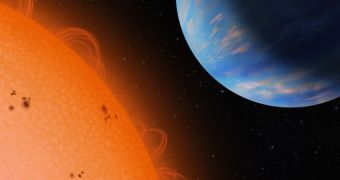Until now, scientists have used various techniques to detect more than 200 exoplanets. Most of these exoplanets are from five to 4,000 times more massive than Earth, and are too hot, too cold or too much of a giant gas ball to be considered likely habitats for life. So far, no one has managed to capture an image of an exoplanetary system that resembles our own solar system.
Recently, 28 more exoplanets have been added to the list, thus expanding the search area for extraterrestrial life. The final count reached 236, and these planets vary widely from gas giants like Jupiter to small, rocky boulders.
It seems that planets can form around a variety of stars, from red giants to brown dwarfs. Actually, in the past year alone, scientists detected 37 new celestial objects, seven of them being failed stars called brown dwarfs, with masses that dwarf the largest, Jupiter-sized planets but too small to sustain the nuclear reactions necessary for stellar ignition.
"We added 12 percent to the total in the last year, and we're very proud of that," said one of the study team members Jason Wright of the University of California at Berkeley. "This provides new planetary systems so that we can study their properties as an ensemble."
Astronomers can't just look for planets beyond our solar system, because they are outshined by the stars they orbit, so actually looking for them is like searching for a firefly next to a lighthouse. They have customized a space telescope with special masks and mirrors which allows it to take photographs of planets orbiting other stars (exoplanets). Now they can detect wobbles of a meter per second compared with the 10-meter limit just 15 years ago.
So far, four of the newly observed exoplanets are part of multiple-planet systems, supporting the idea that at least 30 percent of all planet-parent stars have more than one planetary companion, which brings astronomers closer to finding habitable planets in systems resembling our own solar system.

 14 DAY TRIAL //
14 DAY TRIAL //